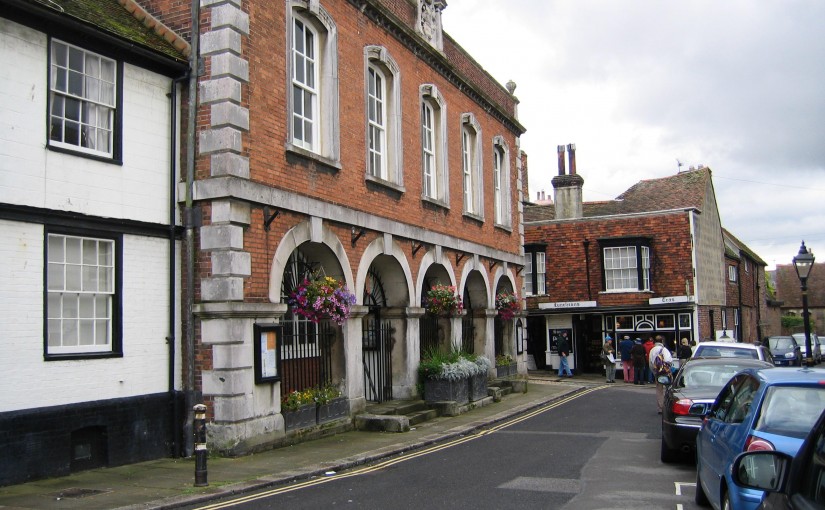RYE TOWN HALL by Gemma Pocock.
The hanging baskets and troughs of flowers outside Rye Town Hall took my eye as I passed by the other day. I knew a bit about St. Mary’s Church, Ypres Tower and The Landgate but very little about this imposing building. I was fascinated by what I found, hence this little piece about it.
The present Town Hall is the third to have graced the same site in Market Street. The first was burned to the ground by the French in 1377. The second was replaced by this fine building designed by Andrew Jelf and built in 1742. His original scale model still survives to this day in the attic room of the Town Hall, along with a fascinating range historic artefacts including Rye Gibbet Cage and the Rye Pillory.
The Rye Pillory was last used in 1813, this was because a publican helped the escape of General Philippon a French Prisoner of War. It was placed on the beach, when they issued punishment to the publican they turned his face to the coast of France.
The Rye Gibbet Cage contains the skull of the local butcher, John Breeds, who was hung in chains for the murder of Allen Grebell (the Deputy Mayor) in the Church yard of St Mary’s in 1742. His remains were exposed in the cage for many years on Allen Grebell. His bones were removed by animals or superstitious people who believed that the drinking of their infusion in water was the cure for rheumatism.
It is a Grade II Listed Building, it is located next to a Grade I Listed Building St. Mary’s Church. Both are located within the Rye Conservation Area.
In 1825 for a short period of time Rye had two Mayors, the official one Rev William Dodson (related to the Lamb family by marriage) and the unofficial one John Meryon. Meryon and his supporters staged a six week “Sit in” at the Town Hall, protesting against the Lamb family who had dominated Rye Council for many years, using the system of ‘Freemen’. Meryon and his council, elected by those outside the Lamb clique, duly locked the Rev. William Dodson and his councillors out. One of Rye’s ancient laws stated that when a mayor was elected, “if the new mayor…will not take charge, but refuse it, all the whole commons together shall go beat down his chief tenement”.
The Lamb controlled Council conducted the town’s affairs from ‘Mountfield’ at the bottom of Rye Hill.
The legal council was eventually reinstated but it was the beginning of the end for the Lamb domination. The Reform Act was passed in 1835 and a wider representation were able to vote.
The Town Hall was used as a Court Room until 1974 when Rye ceased to be a Borough Council and became Rye Town Council.
Today Rye Town Hall is used for office accommodation for the small Council staff and for Council meetings. It is licensed for weddings and its imposing Council Chamber is used many times a year for matrimonial occasions and other important events and meetings. The Butter Market beneath plays an important part on ceremonial occasions.
It is an impressive building but gets overlooked, as Rye has so many beautiful land marks, next time you pass you may like to stop for a second and appreciate it.
